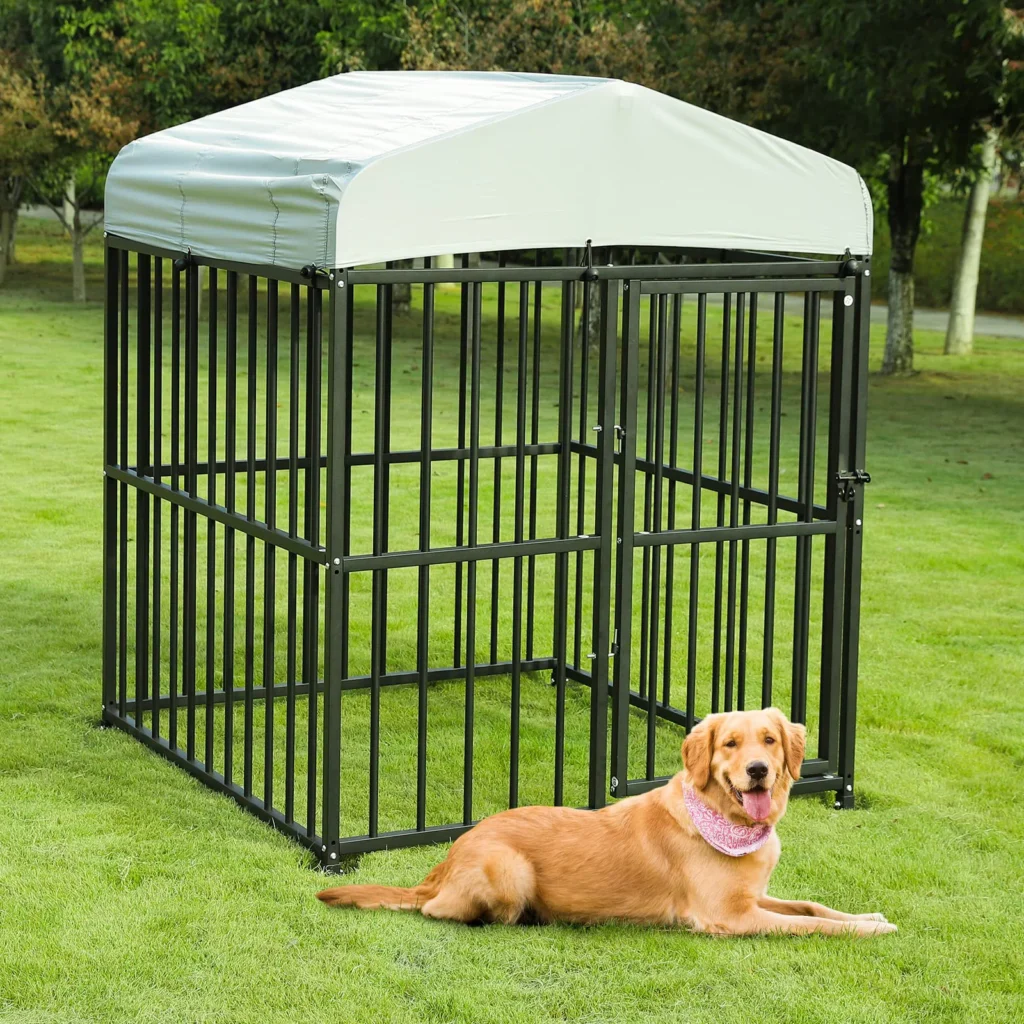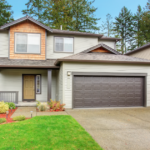When you’re a loving dog owner, ensuring the safety and happiness of your four-legged friend is a top priority. A dog fence cage, often known as a dog crate, can play a pivotal role in achieving these goals. In this extensive guide, we’ll take an in-depth journey into the world of dog fence cages, making sure the information is accessible and informative for dog enthusiasts of all ages.
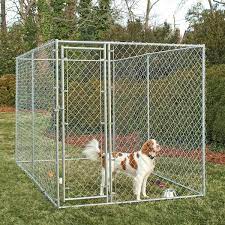
Why Do You Need a Dog Fence Cage?
Table of Contents
ToggleLet’s start by understanding why a dog fence cage is essential for your pet’s well-being. It’s all about creating a haven and providing the ideal environment for your canine companion.
A Safe Space for Your Dog
Imagine a dog fence cage as a personal sanctuary for your pet. It’s a designated area where your dog feels secure, like having their room in your home. Within the cage, your dog can relax, unwind, and have some alone time.
Training and Behavioral Benefits
One of the primary advantages of using a dog fence cage is its role in training your dog. It’s a useful tool for housebreaking puppies and correcting undesirable behaviors in older dogs. Dogs tend to avoid soiling their living space, which is why a crate can assist in housebreaking.
Convenience During Travel
For those who love traveling with their dogs, a dog fence cage can be a game-changer. Whether you’re taking a road trip or flying, a crate ensures your dog’s safety and comfort during the journey. It also makes it easier to comply with airline regulations.
Choosing the Right Dog Fence Cage
Selecting the appropriate dog fence cage is crucial. It should cater to your dog’s size, breed, behavior, and needs. Let’s explore the criteria for choosing the perfect crate.
Consider Your Dog’s Size and Breed
Dogs come in all shapes and sizes, and it’s essential to match the crate to your dog’s specific needs. A larger dog will require a more spacious crate, while a smaller breed might find comfort in a cozier space.
Assess Your Dog’s Behavior and Needs
Every dog has a unique personality and temperament. Some are more active and outgoing, while others are more introverted. Understanding your dog’s behavior is essential when selecting the right crate.
Determine the Right Size of the Cage
To find the right crate size, measure your dog from the tip of their nose to the base of their tail. Add a few inches for comfort to ensure they have enough room to stand, turn around, and lie down comfortably.
Material and Durability Considerations
Dogs vary in their strength and chewing tendencies. If you have a strong chewer or a dog with a tendency to scratch, opt for a crate made from robust materials like metal. For less active dogs, a soft-sided crate may suffice.
Portability and Ease of Setup
If you plan to travel frequently, consider a crate that is portable, lightweight, and easy to assemble and disassemble. This makes it convenient for both short trips and extended journeys.
Setting Up and Using Your Dog Fence Cage
Now that you’ve chosen the right crate, it’s crucial to set it up correctly and use it effectively. Let’s delve into the practical aspects of crate usage.
Step-by-Step Guide
- Unpacking and Placement: Unpack the crate and place it in the location where you want your dog to use it. Make sure it’s not in a drafty or excessively hot/cold area.
- Door Security: Ensure that the crate door is securely fastened. You don’t want your dog accidentally pushing it open.
- Creating a Comfortable Space: Add comfortable bedding or a blanket to the crate. This gives your dog a cozy place to rest.
- Introduction: Gently introduce your dog to the crate. Use treats and positive reinforcement to encourage them to explore and enter the crate.
- Positive Associations: Create a positive association with the crate by offering treats, toys, and praise. Make it a pleasant experience for your dog.
- Gradual Usage: Begin using the crate for short periods. Gradually extend the time your dog spends inside the crate, always rewarding good behavior.
Tips for Making the Cage Comfortable
- Favorite Toys: Place your dog’s favorite toys inside the crate to keep them entertained.
- Water Bowl: Always provide a water bowl when your dog is in the crate, especially during longer stays.
- Positive Reinforcement: Use positive reinforcement, like treats and praise, to reward your dog for entering the crate voluntarily.
- Comfortable Bedding: Ensure the crate is equipped with comfortable bedding to make it a welcoming environment.
- Location Matters: Position the crate in a quiet, comfortable area of your home. Avoid placing it in noisy or high-traffic spots.
Common Mistakes to Avoid
Avoiding common mistakes when using a dog fence cage is crucial for your dog’s well-being.
Overusing the Crate
A dog crate is not meant for long-term confinement. Avoid leaving your dog in the crate for extended periods. They need time outside the crate to exercise and socialize.
Choosing the Wrong Size or Type of Cage
Selecting the wrong crate size or type can lead to discomfort and anxiety for your dog. Take the time to choose the right one based on your dog’s specific needs.
Failing to Properly Introduce Your Dog to the Cage
Some dogs may initially resist entering a crate. It’s essential to introduce them gradually and positively, without any force or coercion.
Neglecting Maintenance and Cleaning
A clean crate is a happy crate. Regularly clean and maintain your dog’s crate to keep it fresh, inviting, and hygienic.
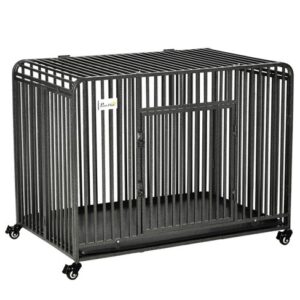
Additional Tips for Using Your Dog Fence Cage
Now that your dog is familiar with their crate, it’s time to explore some additional tips for optimizing their experience.
Crate Training Schedule
Establishing a consistent crate training schedule can be beneficial for both you and your dog. This routine helps your dog understand when it’s time to rest or be on the move. Here’s a sample schedule:
- Morning: Crate time while you get ready for the day.
- Mid-Morning: Playtime or a walk.
- Lunchtime: Back to the crate for a nap.
- Afternoon: Playtime or training exercises.
- Evening: Crate time while you prepare dinner.
- Night: Rest in the crate during your sleep.
Crate Training Games
Crate training can be fun for your dog, too! Consider incorporating crate training games to make the experience more enjoyable. For instance:
- Hide and Seek: Place treats or toys inside the crate and encourage your dog to find them.
- Crate Races: Use verbal cues or hand signals to get your dog to enter the crate quickly. Reward them for their swiftness.
Dog Fence Cage Accessories
Enhancing your dog’s crate experience can be achieved through various accessories designed to provide comfort and entertainment.
Crate Bedding
A comfortable crate mattress or bedding can make a significant difference in your dog’s perception of the crate. Consider materials that are soft, easy to clean, and appropriately sized for the crate.
Crate Covers
Crate covers create a cozy, den-like atmosphere for your dog. They provide privacy and reduce external stimuli, making the crate an even more inviting place for your furry friend.
Interactive Toys
Interactive toys like puzzle feeders or treat-dispensing toys can keep your dog engaged while in the crate. They provide mental stimulation and prevent boredom.
Crate Divider
If you have a growing puppy, a crate divider can be a valuable accessory. It allows you to adjust the crate’s size as your puppy grows, ensuring it remains a snug and secure space.
How to Introduce Your Dog to the Crate
Properly introducing your dog to the crate is essential to ensuring they view it as a positive space. Here’s a step-by-step guide on how to make this introduction successful.
Positive Association
Start by creating a positive association with the crate. Place treats, toys, and familiar items inside the crate to entice your dog’s curiosity.
Gradual Introduction
Gently encourage your dog to enter the crate by placing treats near the entrance. Use a command like “kennel” or “crate” as they enter.
Short and Positive Experiences
Keep the initial crate experiences short and positive. Begin with just a few minutes and gradually extend the duration as your dog becomes more comfortable.
Feeding in the Crate
One effective way to build a positive association is to feed your dog inside the crate. This reinforces the idea that good things happen in the crate.
Ignore Whining
If your dog whines or cries while in the crate, it’s essential not to let them out until they’re quiet. This teaches them that quiet behavior is rewarded.
Advanced Crate Training Techniques
Once your dog is comfortable with the basics, you can move on to advanced crate training techniques.
Crate Training for Separation Anxiety
If your dog experiences separation anxiety, the crate can be a valuable tool. Gradually increase the time your dog spends in the crate while you’re away, starting with short periods and gradually extending the duration.
Crate Training for Travel
If you plan to travel with your dog, crate training can make the experience smoother. Allow your dog to associate the crate with positive experiences during short trips before embarking on longer journeys.
Crate Training for Guests and Vet Visits
Crate training can be especially useful when you have guests or during vet visits. It offers a secure space for your dog, ensuring their safety and the comfort of your visitors.
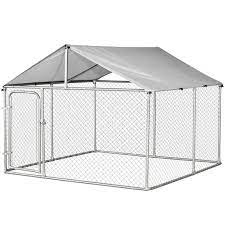
Safety and Responsibility
Safety and responsibility go hand in hand when it comes to crate training. Here are some important considerations:
Temperature and Ventilation
Ensure the crate is appropriately ventilated and your dog is not exposed to extreme temperatures. Never leave your dog in a hot or cold environment.
Regular Breaks
It’s essential to provide your dog with regular breaks outside the crate. While crates are beneficial, they should not replace exercise and social interaction.
Monitoring Behavior
Keep an eye on your dog’s behavior while in the crate. If you notice signs of distress or discomfort, consult with a professional dog trainer or behaviorist.
Conclusion
In conclusion, a dog fence cage is more than just a crate; it’s a place of comfort, safety, and security for your beloved pet. Through proper introduction, positive reinforcement, and a thoughtful selection of accessories, you can transform the crate into a haven where your dog feels content and relaxed. By incorporating crate training into your dog’s routine, you not only enhance their quality of life but also strengthen your bond. Remember, a happy and secure dog leads to a happy owner!


